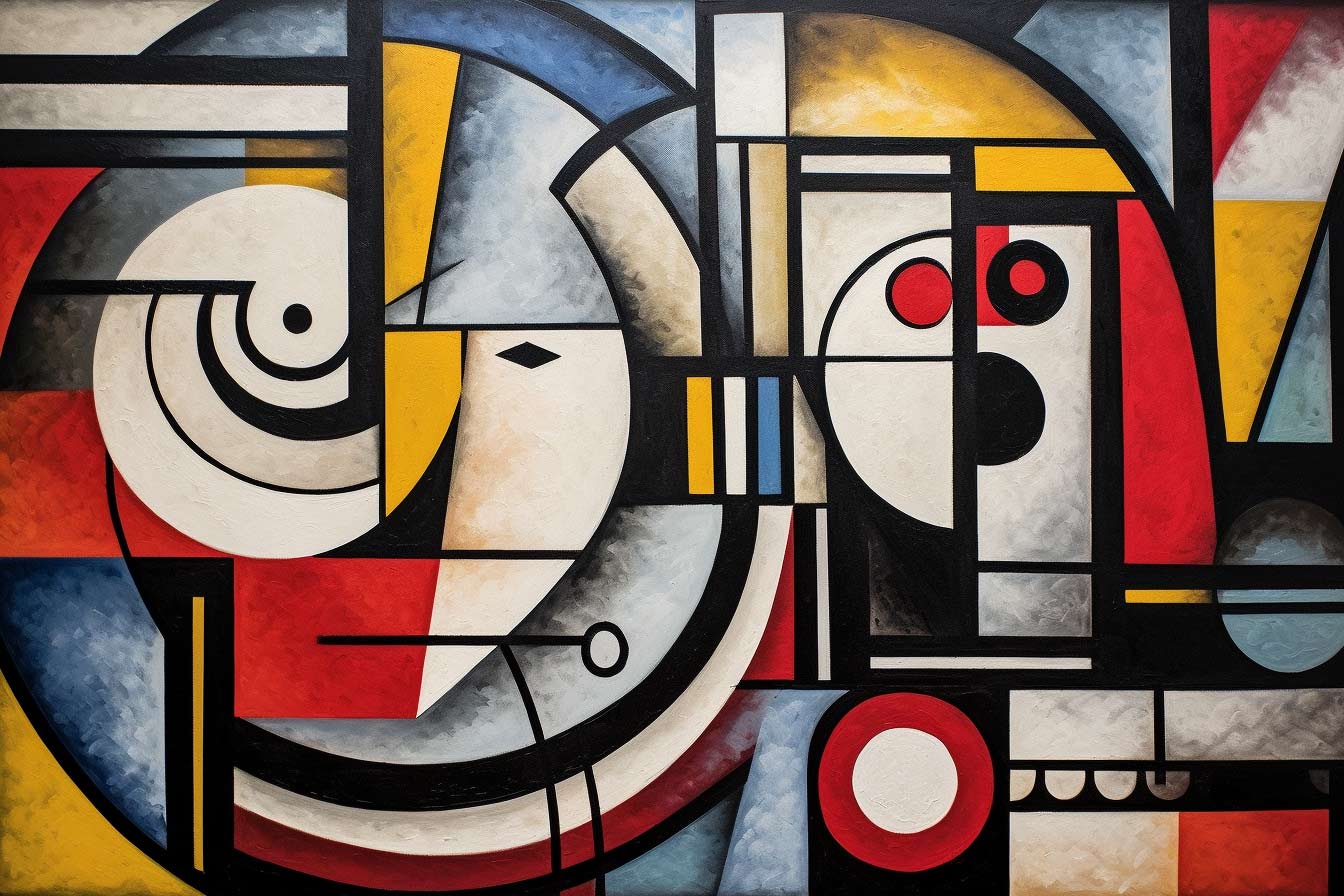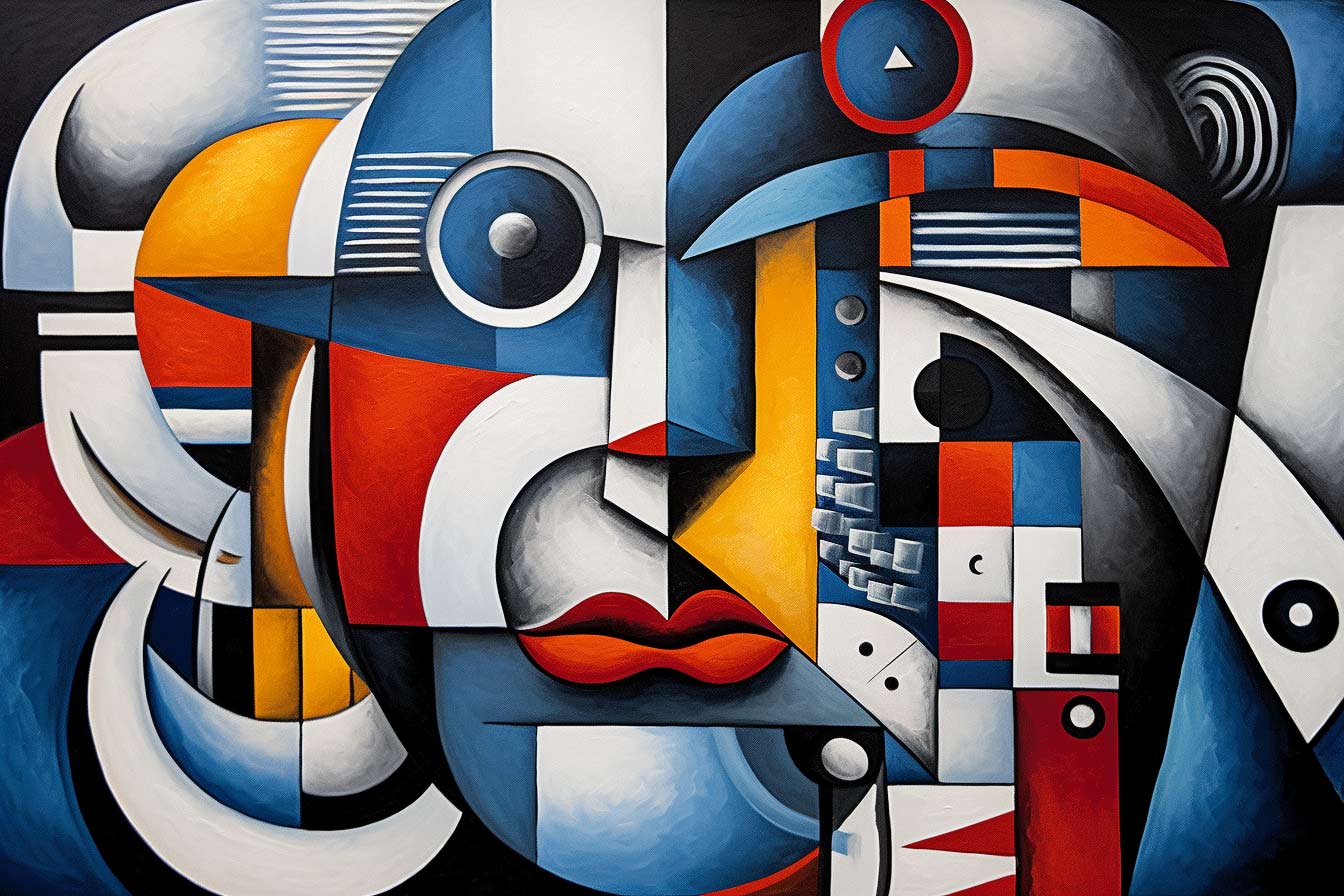Fernand Léger: A Tapestry of Life & Cubism
Born amidst the ripening mists of France in 1881, Fernand Léger emerged from Argentan in Normandy, drawing breath during an era of transformation and grandeur, sculpted by the hands of artists and visionaries. It was as if the sun’s rays had intertwined with destiny to produce an artist whose vision would transmute the mundane into the extraordinary.
Léger’s journey into the world of art commenced with architectural drafts, but Paris beckoned him in 1900, and there he enrolled at the School of Decorative Arts before joining the Paris School of Fine Arts. Like so many ambitious souls of that period, he found the bosom of the avant-garde at the capital’s Montparnasse quarter. Encountering artistry, he was swept by the currents of Cubism, a movement that would encapsulate his essence and technique.
The brute machines and starkness of the modern era did not escape Léger’s eye. Rather, they found a fervent admirer in him. His affection for the mechanical world rendered a unique cadence to his work, ensuring that amongst the Cubists, Léger’s canvas pulsated with a rhythm of its own. To the naked eye, it was Cubism, but to the discerning observer, it bore the unmistakable imprint of Léger: bold, robotic, and unapologetically futuristic.
The trials of the First World War tested Léger as it did the world. Serving at the frontline, the grim machinery of warfare weighed on his soul. But art remains an indefatigable spirit, and from the crucible of battle, Léger emerged with a renewed vigour, infusing his paintings with a brighter palette and tubular forms.
Léger’s brush strokes waxed and waned, but they never ceased. With passing years, he flirted with abstraction and even dabbled in film. It was not just the canvas but the reel of cinema that captured his fancy. Yet, it was in painting that his true genius was enshrined.
Before we delve deeper into the annals of Léger’s life, it is prudent to cast our gaze on the ten cubist masterpieces that stand testament to his unparalleled vision:
- “The Wedding” (1911) – A vivid amalgamation of cylindrical and conic shapes, presenting human forms in an almost mechanistic manner.
- “Nudes in the Forest” (1909-10) – An early work that juxtaposes human contours with nature, punctuated by fragmented forms.
- “The City” (1919) – A bustling urban panorama, capturing the raw essence of post-war urban life.
- “The Smokers” (1911-12) – Portraying two figures amidst a haze, a work characterised by sharp lines and stark contrasts.
- “The Card Players” (1917) – A foray into a more abstract realm, this piece is a melange of colours and geometric shapes.
- “Contrast of Forms” (1913) – A series wherein Léger explored colour, form, and line, presenting an avant-garde confluence of abstract motifs.
- “The Mechanic” (1920) – An ode to the industrial age, the figure stands bold and robust, reminiscent of modern machinery.
- “Three Partisans” (1917) – A reflection of wartime experiences, showcasing figures in fragmented, stark forms.
- “Houses Under the Trees” (1913) – A harmonious fusion of nature and architecture, it boasts Léger’s unique palette and form.
- “The Large Tug” (1923) – A portrayal of the mechanical wonder with bold, unyielding lines, encapsulating the spirit of modernism.
The concluding chapters of Léger’s life saw him actively engaged in teaching, instilling his philosophy in nascent minds. Like the radiant hues on his canvas, Léger’s life came to a luminous close in 1955. Yet, in death as in life, his legacy endures, casting a long shadow on the corridors of art, echoing the timeless spirit of Cubism, and whispering the tales of a modern age viewed through an exceptional lens.

